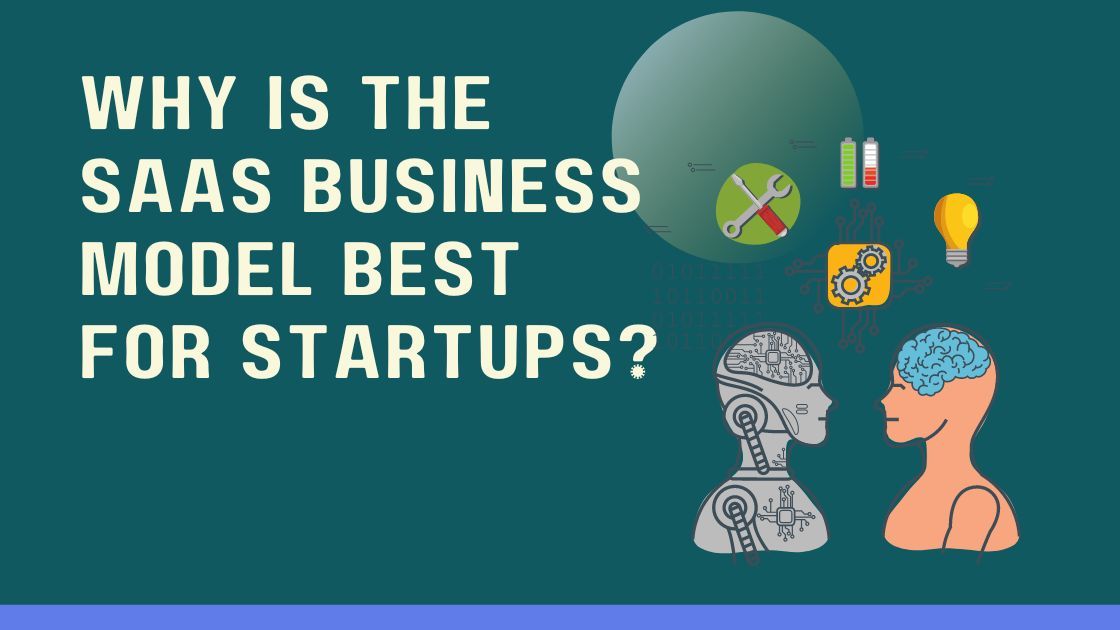Software as a Service (SaaS) is the buzzword among today's innovative businesses.
Just twenty years ago, SaaS was a lesser-known term, but it is transforming how many of the world's largest corporations handle data and run their operations.
Over 15,529 companies registered with the SaaS model have seen over 12 times growth rate since 2010, so it's safe to say that SaaS is a 21st-century business model.
What exactly is the SaaS model, and how can you benefit from it?
Understanding SaaS Model and Its Stages
SaaS is a business model in which customers subscribe to centrally hosted software. A SaaS company leases its software via a centralized, cloud-based system. Employing SaaS development services can significantly expedite the process of building and scaling efficient, cloud-based applications, providing startups with the tools necessary to succeed in a competitive market.
A SaaS company is in charge of the servers, databases, and other software that allows their product to be accessed and used via subscription model. This could be monthly, annually, per user, or by package level.
As SaaS businesses are hosted on a centralized cloud, it makes it easier to constantly update software and push it to users resulting in higher customer retention than other business models.
Stages of the SaaS model
Every SaaS business goes through three distinct phases. Everyone understands the startup phase and dreams of the stable golden goose phase, where the money never stops. However, hypergrowth is a phase that is often overlooked, even though it is one of the most stressful stages for a SaaS company, which decides whether the company will either make or break it.
Startup stage
This includes getting everything up and running, developing a working product, and releasing it in the market to gain your first few customers.
Hypergrowth stage
If the market likes your product, you will most likely see rapid growth as customers adopt your software. While this sounds great, it usually results in higher costs because you need to rapidly expand data, storage, bandwidth, and other technicalities to support the newly acquired customers.
Stable golden goose stage
This is the point at which your SaaS business has leveled out. You're starting to make a decent profit, and acquiring new customers isn't going to strain your infrastructure as it did during the hypergrowth phase.
SaaS Business Model Examples
There are examples of tremendous success in the B2B and B2C sectors, AI and video hosting, e-commerce, data analytics, and elsewhere, such as Netflix, Zoom, ProofHub, ClickUp, Trello, and Slack. The variety of successful SaaS-type businesses is astounding.
These businesses all use various SaaS business models. They have different business models, and charge customers in different ways as some want one-time payments, while others operate on a subscription basis and operate differently.
Reasons to Consider the SaaS Business Model
Now that you have understood the basics of the SaaS model, let’s understand why you should consider the SaaS business model in your journey.
Lesser costs
For startups, the SaaS business model's affordability is one of its most crucial benefits. When creating software that users must install, you must consider supporting multiple operating systems and devices. You must also provide customer support for local device issues for your customers.
However, with this business model, you don't have to worry about supporting or dealing with local device issues. As your SaaS business has lower costs, you can offer lower prices to your customers.
Recurring revenue and stability
Another significant advantage of the SaaS business model is that it provides recurring revenue and stability. Many other business models prioritize constant customer acquisition, which can be costly and time-consuming. However, with the SaaS model, customers pay a monthly fee rather than a one-time fee for your software, making it much easier to predict your monthly and annual revenue.
With a solid base of existing customers providing recurring revenue, you can focus on growing your business without being concerned about your bottom line.
Easier to update and release new features
It is more difficult to add new features and upgrades to on-premise software. Consider how, in the past, if a consumer wanted Microsoft Office, they had to buy the CD-ROM and install it. When a new version of Microsoft Office with more advanced features was released, they would have to purchase the new version and reinstall it. However, with the SaaS model, you can more easily present your users with cool new features and useful updates.
Updates and new features can be quickly added and made available to your users using the SaaS business model. SaaS companies can offer upgrades and new features regularly if they want to.
User-friendly
The products offered by your SaaS company should be user-friendly. It provides customers immediate access to onboarding, best practices, and samples after logging in. And they do not need to install any complicated software, so they can start using the application immediately.
Also, the SaaS model makes offering free trials easier for your business. Free trials are essential because they lower the risk for the customer. It allows potential customers to try out your goods before giving you their credit card information. Once their free trial has ended and they have seen how great your application is, they can sign up for a paid plan.
Key SaaS Business Model Metrics
As we delve deeper into the SaaS business model, it becomes critical to understand some key metrics invariably emerge as you delve deeper into the SaaS business model. It's crucial to keep an eye on these important SaaS Metrics to comprehend the state of a SaaS business.
Customer churn rate
Customer churn rate is a metric used to assess a company's effectiveness and the number of customers lost over a specific period of time.
When measuring the churn rate, keep an eye on more than just the numbers. Please pay close attention to their personas to comprehend why these customers left and how to retain them.
Revenue churn
Revenue churn is the total amount of revenue you have lost over a specific time frame. It is crucial, particularly if some clients produce more revenue than others and may have different effects.
You should measure both the revenue and customer churn rate to avoid being shocked by the wildly divergent results. Revenue churn should be a part of your SaaS revenue forecasting.
Customer lifetime value
Customer lifetime value (CLV) is the sum of sales that a customer makes while engaging with your brand. The following is how to determine the customer’s lifetime value:
CLV= (Customer revenue x customer lifetime) – the cost of acquisition and maintenance
Customer lifetime value increases as customers use your service for a longer period of time. Using this SaaS metric, you can clearly understand how valuable a customer is to you.
Customer acquisition cost
The total amount of work your team must put in to bring in a client. This includes both the money spent on marketing as well as the time of the sales representatives. Monitoring your customer acquisition costs can teach you a lot about how your business is doing.
It can be a huge warning sign for the company if the money and time required to acquire just one customer are greater than the MRR or ARR that customer generates. Your customer acquisition cost will also show you whether it is getting harder or easier to bring in new customers over time.

Churn
Customer churn is the number of clients who cancel their monthly or yearly subscriptions to your company. You can also have revenue churn, the amount of money lost annually or monthly.
Churn is to be expected in most businesses, but maintaining an acceptable rate in comparison to your company's growth is a critical metric to understand, measure, and track. In subsequent years, your churn rate should continue to fall until it reaches zero.
Customer retention
This SaaS metric refers to how long you can keep a customer based on your subscription model. This could be done either annually or monthly. Healthy retention can lead to increased customer growth.
If the software is user-based or has multiple product components, upsell and expansion may be possible, resulting in annual retention exceeding 100%. Healthy customer retention does not imply that you keep every customer every year, but it does imply that your company grows through a combination of renewals, upsells, and contract expansions.
SaaS Model Growth Strategies
When it comes to expanding a SaaS company, there are numerous options available. Your choice of growth strategies will be significantly influenced by your core competencies and what has historically worked best for you. Nevertheless, here are some strategies you can use to expand a SaaS company and retain customers to increase your revenue.
Referrals and stories
If your SaaS is crucial to how a company conducts business, you may be fortunate to have clients who are super fans and love promoting the value you bring to their day, their work, and their business. Profiting from these success stories can be a clever way to grow your business in the real world through speaking engagements, marketing materials, or even personal recommendations.
These customer success tales provide compelling justifications for your work. A solid client referral program is frequently the key to more fruitful initial client interactions, and they may even help your sales team break into accounts that have historically been challenging to do so.
Try Markup Hero
Did you know that some of the world's most successful engineers communicate visually?
Start using Markup Hero to take screenshots, annotate images and PDF's and become a blogging rockstar.
Signup For FreeSocial media marketing
Social media marketing tools can help you build your brand and voice. Showcasing your company's voice and personality and commenting on and providing insight into trending topics can make it easy to increase your brand's awareness in a particular industry.
Influencers or well-known individuals in a particular field can be helpful on social media because people are much more likely to interact with a person's content than that of a branded company page on LinkedIn, for example.
External resources
You can actively work to gather positive customer reviews on sites like G2.com, which can work as an external justification for why their product is valuable when pitching to new customers.
4. Inbound Lead Generation
Inbound lead generation typically involves creating content that is relevant to your target market and promoting it through paid ads or through organic exposure. The goal of inbound lead generation is to attract a high-quality audience that is interested in your product or service. Inbound lead generation is especially effective for SaaS companies because it allows you to reach potential customers before they have even heard about your product or service. Furthermore, inbound lead generation allows you to build trust with potential customers by showing that you are an expert in your field.
Final Takeaway
Thanks to the SaaS business model, you have a plethora of business opportunities. Given how highly regarded it is, more people will use it in the future. Along with understanding market demand and competition, you must also know the SaaS industry's dynamics as you work to provide your clients with unique solutions and value.
But the most successful SaaS companies all follow a few fundamental business model rules: following the right metrics and focusing on the right growth strategies. Your startup business can also head in the same direction if you apply the same principles to it.


